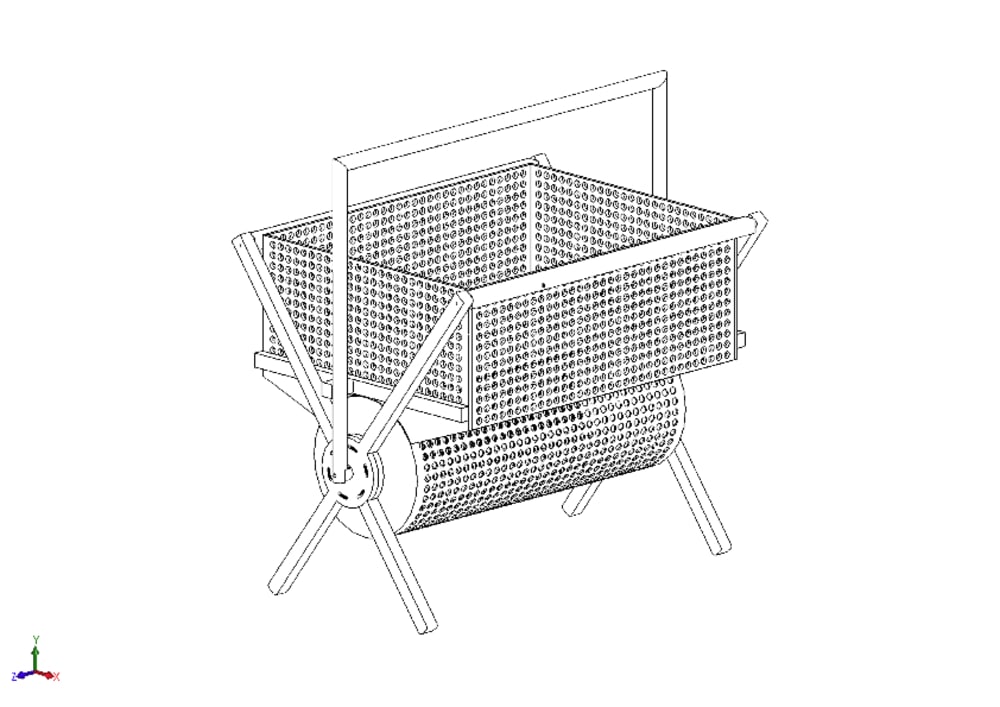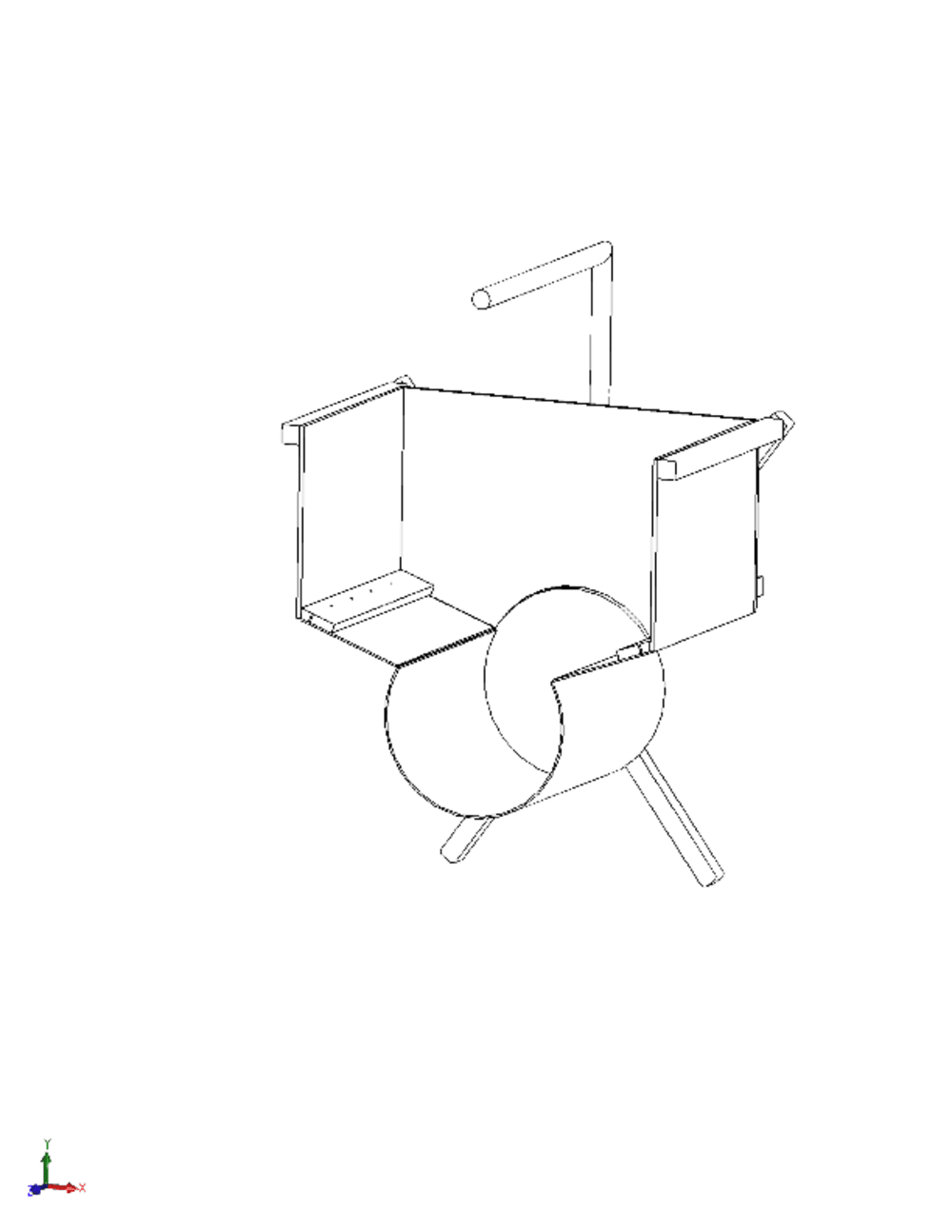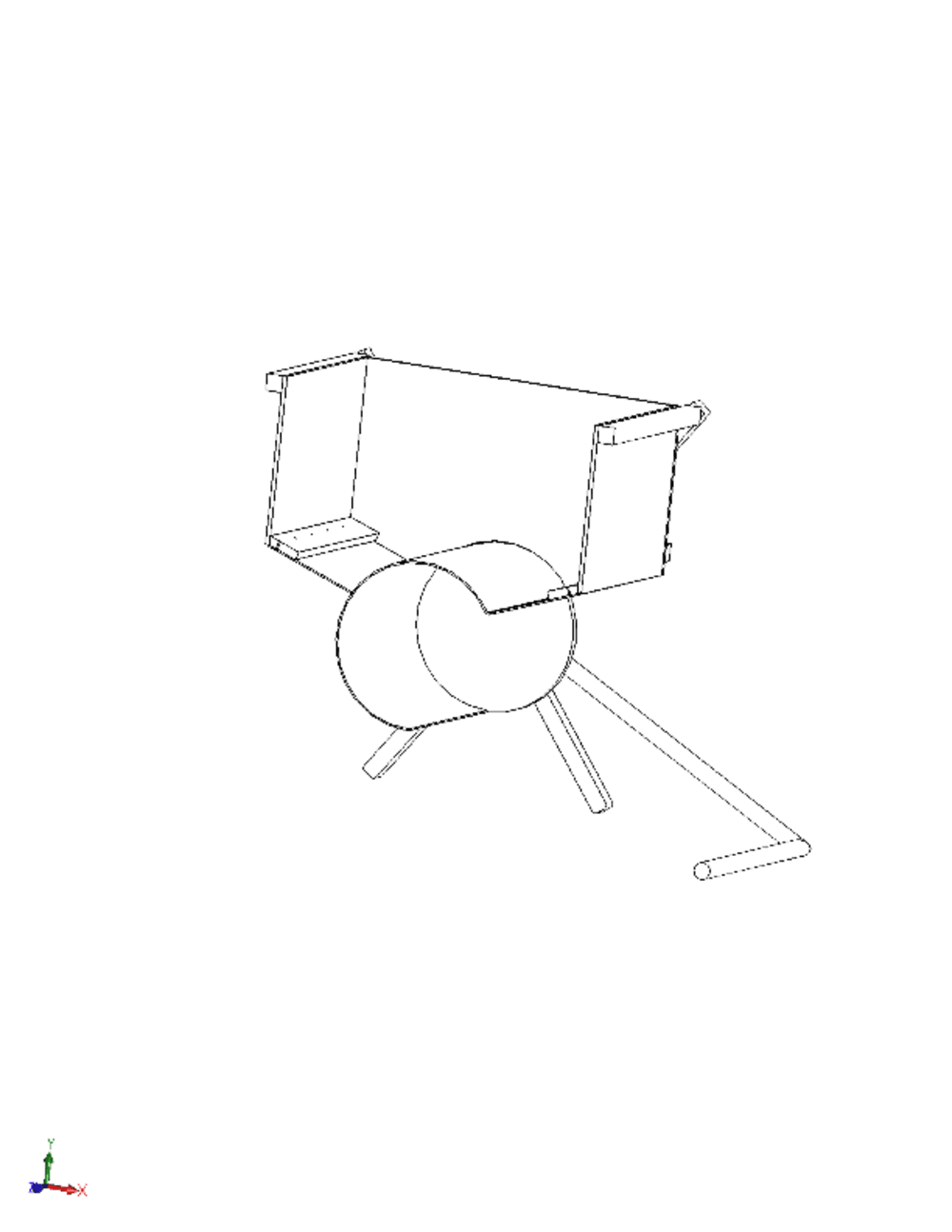Existing composters for private garden application have the drawback, that after having filled in the organic material the most valuable ready compost is located in the inner center of the composter and can only be extracted by taking away all the outer material. This requires a lot of work and additional space for depostiting the non-composted material.
To avoid these drawbacks a composter is shown with the following benefits:
1. The composter requires only a limited space
2. The matured compost can be taken out of the composter in one simple action without removing the non matured compost
3. The matured compost is taken out in portions
To explain the principle see the attache illustrations. Picture 1 shows a total view of the composter, consisting of an upper chamber with an upper opening to fill in the organic material and a lower opening and a lower cylindrical chamber, which can be rotated around it central axis using an attached handle. The cylindrical chamber shows along its mantle an opening about 120° wide, which in the rest position of the cylinder shows upwards to the upper chamber, so that a combined volume results, as can be seen schematically in picture 2. Organic material, filled in via the upper opening of the upper chamber falls then into the cylindical chamber and so the cylinder and the upper chamber ist fiied successively. The first filled in organic material and therefore the first matured compost is therefore located in the cylinder. To take out this valuable matured compost after a specific time, one has only to rotate the cylinder with the handle around its cylinder axis in a outtake position. With this rotation, the opening of the cylinder along its mantle is rotated sideways and the compost can be taken out easily. With the same rotation the mantle of the cylinder closes the lower opening of the upper chamber, so that the organic material in the upper chamber can not fall down as can be seen schematically in picture 3. After removal of all or only a part of the compost, the cylinder is rotated back into its rest position. therefore the lower opening of the upper chamber is reopened again to the cylinder and non matured organic material falls down into the cylinder.
To make the maturation process more effective, all the walls of the chambers can have openings, small enough to keep the organic material and the compost inside the chambers and large enough to let water drain through the chambers. The chambers can be made from aluminum, steel, plastic or wood or any other useable material.
Like this entry?
-
About the Entrant
- Name:Peter Schmitt
- Type of entry:individual
- Patent status:pending








